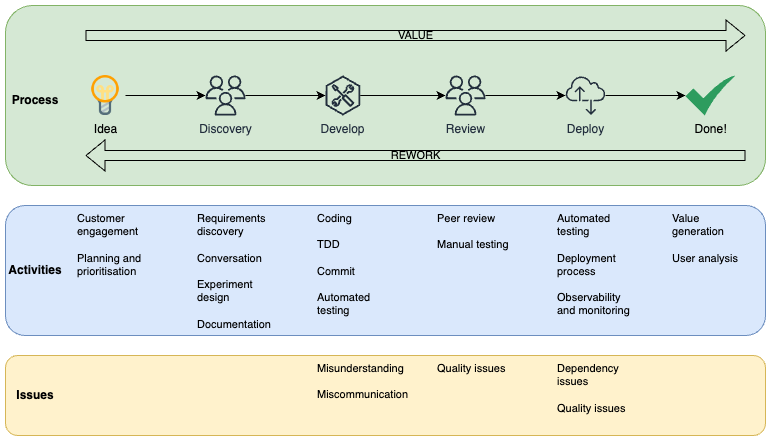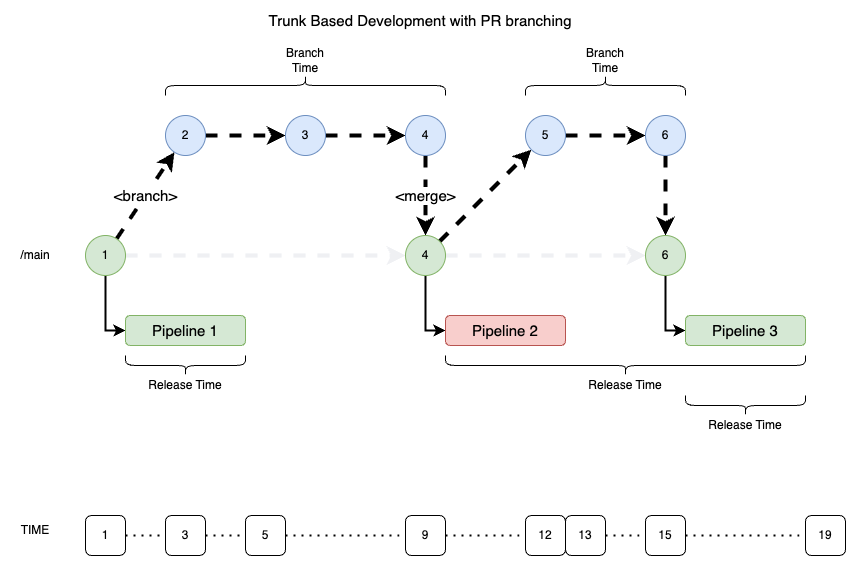Definition
The measurement of Lead Time is a key component of Lean theory. For software development, there are two parts to lead time:
- The time to design and validate a product / feature
- The time to deliver the feature

The design time is considered the "fuzzy front end" since it is difficult to estimate and outcomes are highly variable.
Delivery time is generally more predictable.
For WayFinder, we follow the measurement adopted by DORA - focusing on the delivery time. “Done” in this context means running in Production.
Classification
WayFinder calculates a classification tag for lead time to allow you to compare your performance with wider industry performance.
Classification tags are based on industry standards and DORA findings.
| elite | high | medium | low | |
|---|---|---|---|---|
| lead Time | Less than one day | Between one day and one week | Between one week and one month | Between one month and six months |
